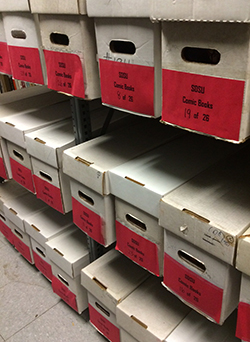
Like most libraries, they don’t have the funding to process the donations, and to make them accessible to patrons.
Thus, San Diego State University has set up their own crowdfunding portal, called Strive. Run in-house, it allows for various campus organizations to fund small projects. (The marching band, the restoration of a mural, threshers for Ethiopia…)
Here’s the online campaign, with a goal of $4,000. It stands, currently, at 52% and 12 days left.
If you’re shy about using the Internet, you can donate by other means! Of course, while the campaign has a set deadline, they, like libraries everywhere, could always use more funding!
So… what’s in the collection?
Comic Arts Collection
The Comics Arts Collection emphasizes alternative and independent titles, graphic novels, drawn books, and underground comix, as well as materials that document the history of comic book culture and the creative process behind comic book production. Noteworthy holdings include Neil Gaiman’s Sandman, several popular anime/manga series, a full run of RAW Magazine, and various titles published by Fantagraphics, Image, Caliber, Dark Horse, Last Gasp and Drawn & Quarterly. Many DC and Marvel titles are also available. (Please contact SCUA for a list of uncataloged titles in the Comic Arts Collection)Richard Alf Papers (not yet processed for public use)
The Papers of Richard Alf consist of approximately 20 linear ft. of various materials and document types related to Comic-Con conventions (including the triple fanfares held in Detroit); material related to Mr. Alf’s comic book business and store (Comic Kingdom); original art by Jack Kirby and Scott Shaw; and material on the Empire Sign Company and other ventures Mr. Alf was involved in. The Alf papers should help document how Richard Alf “provided business sense, funds, transportation, energy, hard work, enthusiasm, good cheer, and social vision that proved essential to establishing Comic-Con as a viable institution.” (Quote from “A Tribute to Richard Alf” – Comic Con session, 2012). Richard Alf passed away in 2012. The collection was gifted to the SDSU Library Dept. of Special Collections in the summer of 2012 by Richard’s mother, Martha.Donna Barr Collection, 1963-2006 (14.5 linear ft.) [ MS-0072 LA 4410, Special Collections and University Archives ]
Donna Barr is best known for her two series Stinz (1984) and The Desert Peach (1986). She has been a respected presence in drawn-book publishing throughout her career. Her drawn books redefine traditional novels, artist’s books, graphic novels, book design and illustration. Twentieth-century German culture, literature, world mythologies, history, and religion all inform her artwork, which is influenced by Japanese woodcuts, European fine arts, Victorian novels, Chinese poets, and Russian mystics. She works in pencil, ink, watercolor, and silkscreen. In addition to a large collection of cataloged items (including Barr’s incredible manuscript notebooks known as the “Black Manuscripts”), materials in this collection include correspondence, newspaper clippings, general ephemera, drafts, manuscripts, and working files.Susanna Bruff Scrapbook, 1927-1929.
This scrapbook consists of newspaper clippings brilliantly hand-colored in watercolor by Susanna Bruff, and pasted onto pages of a discarded catalogue. Each clipping is an issue of a popular comic strip entitled Ethel, which was drawn by Ethel Hays and syndicated in the 1920s. Using the daily adventures of flapper Ethel, each comic is a commentary on the changing role of woman in 1920s American society. Topics covered by the comic strips include: advances in technology such as telephones, electricity, and refrigeration; changes in fashions, hairstyles, and cosmetics; equal rights and representation for women in society; increasing participation in sports and traditionally male activities; developing changes to courtship and marriage; and the emerging culture of flappers. The colored comic strips appear in no order, but larger full-page newspaper clippings of the comic are folded and pasted in near the end of the book.Genny Guracar Papers, 1959-1999
Using the pen name Bulbul (Turkish for Nightingale), Genny Guracar produced cartoons and comics which “reflect the struggle for the wholeness and full human status of women, elders, children, people of color, and mother earth.” Born in Chicago and graduating from the University of Michigan with a degree in design, Guracar began moonlighting as a cartoonist in the 1970s and went on to acclaim for her feminist perspective cartoons which appear in many newspapers, magazines, and books.J.R. Williams’ Bull of the Woods Comic Strips
A collection of 144 comic strips created by J.R. Williams for his BULL OF THE WOODS collection. The collection depicts daily life in the machine shops after World War I. The strips are amusing and show an uncanny understanding of human nature. They represent a time when so many Americans, men and women, were learning about lathes, boring-mills, and other machinery. Each comic strip is in color and measures 10 1/8″ x 9 5/8.” We believe this collection was used by salesmen as examples of the comical illustrations done by Williams to depict for a machine shop, manufacturing plant, automobile repair shop, etc. ideas for calendars or other types of advertising giveaways.RawMagazine: The Full Run
Special Collections has a full run of this groundbreaking publication: all 8 regular issues constituting volume 1, the 1st compilation (Read Yourself Raw), and all 3 book-format issues comprising volume 2. Volume 2, no. 1 is signed on the front cover by Kaz, Kim Deitch, Ben Katchor, Mark Newgarden, Drew Friedman, R. Sikoryak, Gary Panter, Mark Beyer and Art Spiegelman. The last 2 artists have embellished their signatures with little drawings. The collection includes all 1st release chapters of the Pulitzer prize-winning Maus. We are proud of this very special item that has huge significance in the world of contemporary art and comics.West Coast Zines Collection
The West Coast Zines Collection consists of zines dating from 1985 to the present. Topics include music, politics, activism, feminism, gender, sexuality, and other issues which generally cross race, class, and geographic boundaries. The zines are arranged alphabetically by title. Author, date and volume, place of publication, and category (i.e. music, technology, feminism, etc) are also included in each description. (Note: this collection is currently being reorganized to incorporate a collection of mini-comics and will soon have a new collection name. Please contact SCUA for more information.)
Other items of interest:
Comic Arts in the Edward Gorey Personal Library
The Edward Gorey Personal Library collection at San Diego State University library comprises over 21,000 books. These are the actual books that Edward St. John Gorey (1924-2000) collected in his lifetime.
5,437 titles are cataloged now. You may check back here for updates to this number as cataloging proceeds.[YUP! He collected a lot of comics! Asterix, Calvin & Hobbes, The Far Side…]
The Incredible Mr. Limpet Production Material Collection, 1960-1964 (13.75 linear ft.) [ MS-0131 LA 4410, Special Collections and University Archives ]This collection includes production materials for the film The Incredible Mr. Limpet (WA. 1964), including treatments, outlines, synopsis, screenplay, business correspondence, agreements, contracts, research material, Navy material, publicity, and sneak preview information. Included also are animation cells and 3 reels of 35-mm film of The Incredible Mr. Limpet.
[Go ahead, click on those links…]
They even surveyed the University faculty! (Oooh… graphs! And a word cloud! Words as pictures!)
They’re also quite active in the local comics community!
Please visit their site! Please donate! Twenty years ago, it was uncommon for a university to have more than a shelf of books about comics (usually no graphic novels or comic strip collections). Even more rare, libraries with special collections and archives spotlighting comics and graphic novels! While we in the comics community rave about the Renaissance of comics creation currently going on, we focus less on the academic and research side of comics, whether it’s “applied comics” being used to deliver information, or comics being used as a gateway drug for literacy, or the general history of the industry and fandom. Perhaps, with more analysis and appreciation, we can evolve from a Renaissance to an Enlightenment?


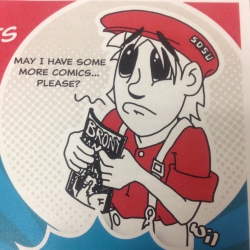
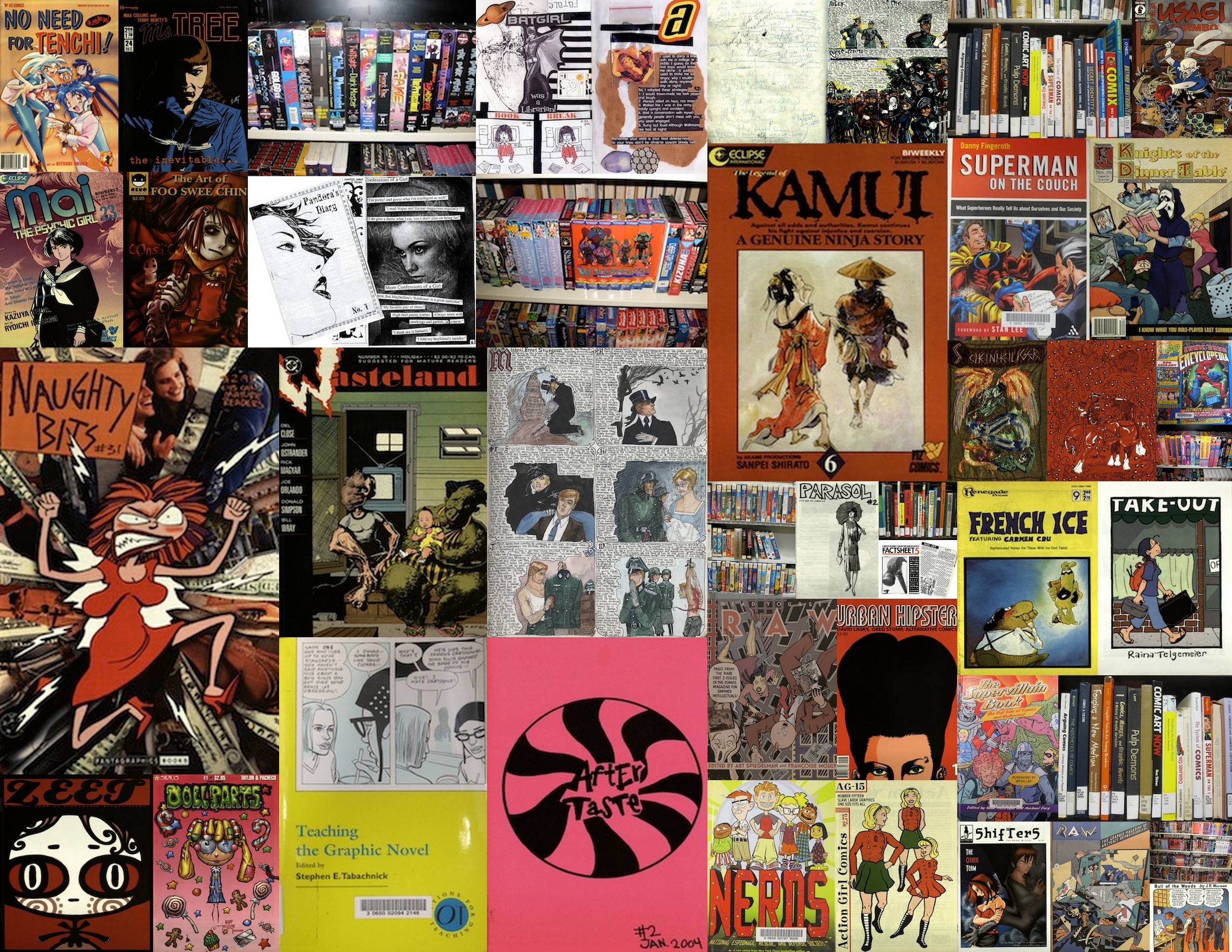
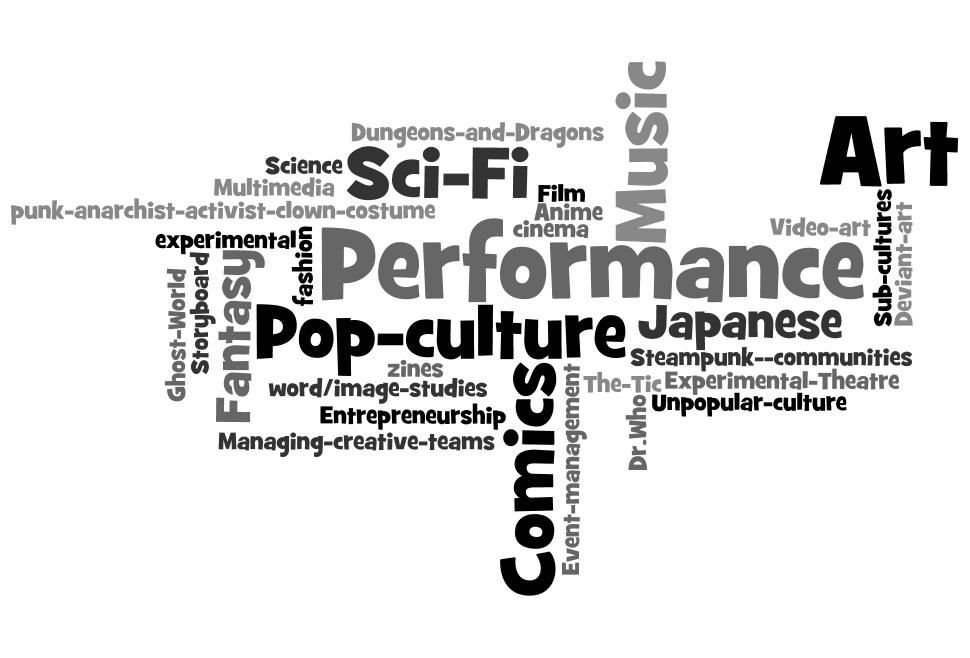
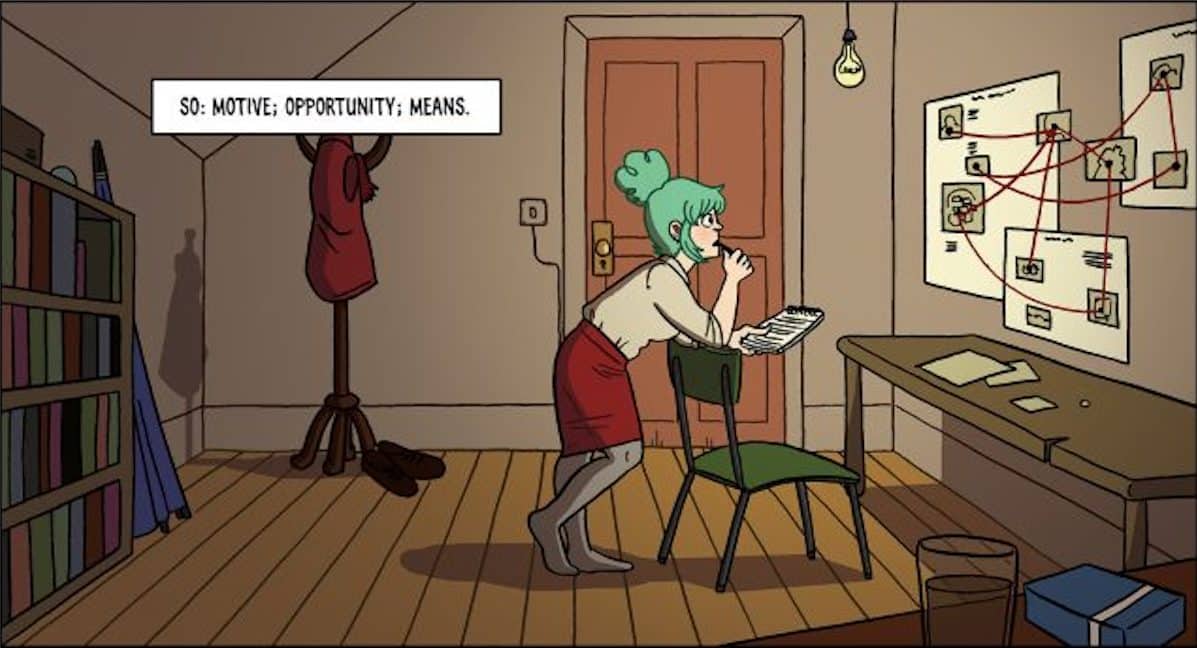
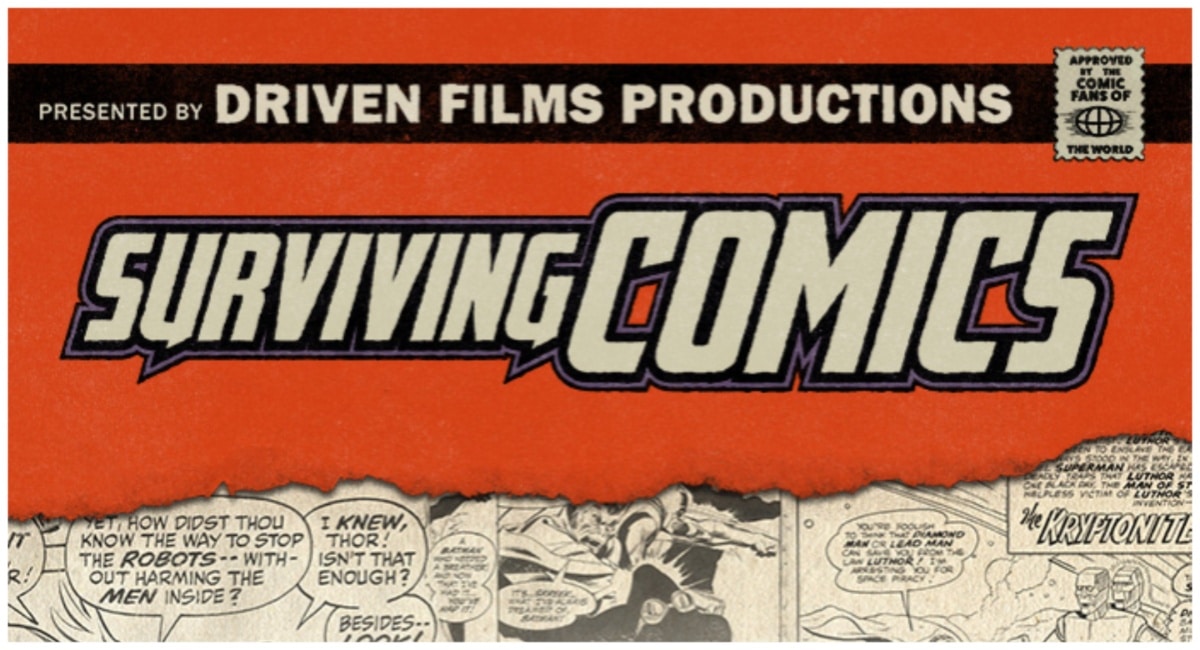
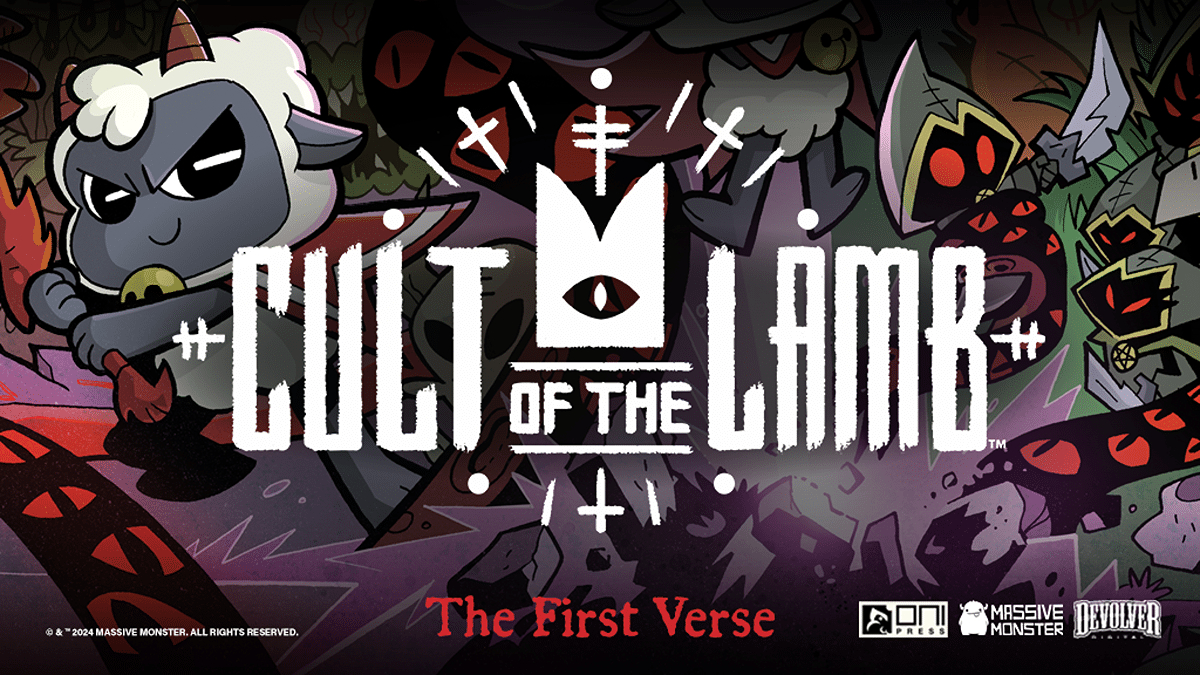



“$6,391 RAISED
GOAL $4,000”
YAY!
Comments are closed.